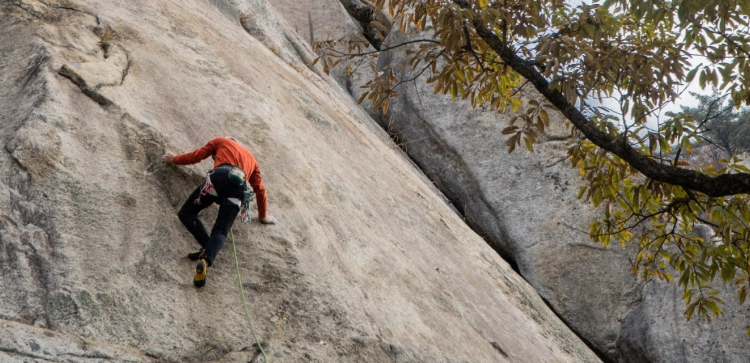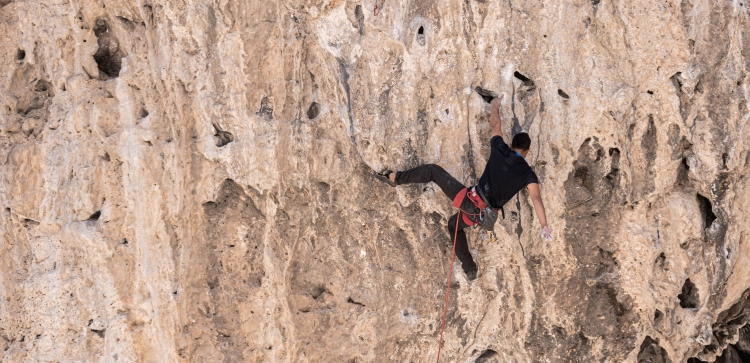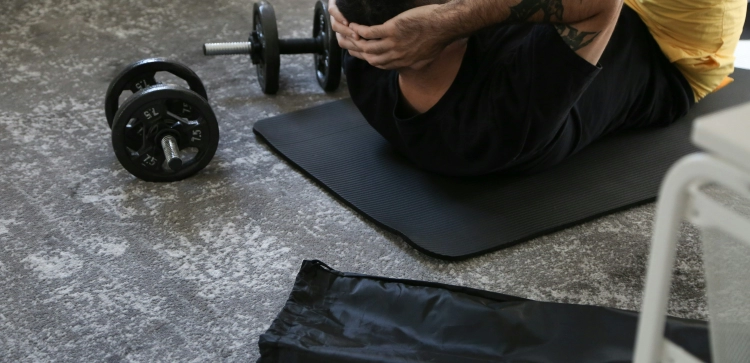Mastering Balance And Footwork In Climbing: Techniques For Stability And Control

Climbing is a symphony of physical and mental elements, and at its core lies the intricate dance of balance. The role of balance in climbing movements is not merely a technical aspect; it's a fundamental skill that underpins the climber's ability to navigate vertical terrain with finesse and control. In this comprehensive guide, we'll delve into the nuanced world of balance in climbing, exploring its multifaceted dimensions, the crucial role of footwork, and practical ways to enhance your performance.
- The Essence Of Climbing Balance
- Core Stability: The Foundation Of Balance
- Weight Distribution: Finding The Optimal Center
- Footwork Precision: The Key To Efficient Balance
- Common Footwork Mistakes (and How To Fix Them)
- Navigating Footholds: Tips And Techniques
- The Impact Of Balance On Climbing Movements
- Smearing: Utilizing Friction For Stability
- Dynamic Movements: Balancing In Mid-Air
- Overhangs And Roof Climbing: Mastering Body Tension
- Honing The Climbing Balance Skill
- Dynamic Balance Exercises: Enhancing Agility
- Slab Climbing Techniques: The Challenge Of Low Angles
- Footwork Drills To Improve Balance
- Maintaining And Advancing Your Footwork
- Addressing Common Questions And Concerns
- How Does Climbing Terrain Affect Balance?
- Can Climbing Shoes Affect Balance?
- How Does Mental Focus Impact Balance?
- Conclusion: The Ongoing Pursuit Of Balance Mastery
The Essence of Climbing Balance
Understanding what balance truly means in the context of climbing is the first step toward mastering it. From physical alignment to precise control, this section explores the foundational elements that support your ability to stay steady and move efficiently on the wall.
Core Stability: The Foundation of Balance
At the heart of climbing balance is core stability. The core, encompassing the muscles of the abdomen, lower back, and pelvis, serves as the epicenter of balance control. A strong and engaged core provides climbers with the stability needed to execute precise movements, maintain body alignment, and distribute weight effectively.
Weight Distribution: Finding the Optimal Center
Balance in climbing is a delicate play of weight distribution. Climbers must strategically distribute their body weight over footholds and handholds, ensuring an optimal center of gravity. This nuanced awareness of weight distribution allows climbers to move efficiently, minimizing the risk of uncontrolled shifts and ensuring stability on the rock.
Footwork Precision: The Key to Efficient Balance
Your feet are your foundation. Good footwork not only supports balance but also enhances movement efficiency and energy conservation. Here's how it contributes:
- Balance: Proper foot placement stabilizes your position and supports your center of gravity.
- Energy Conservation: Effective footwork reduces upper-body strain, letting your legs do more of the work.
- Precision: On small or slippery holds, precise foot placement is often the difference between control and a slip.
Common Footwork Mistakes (and How to Fix Them)
Even experienced climbers can fall into bad habits. This section breaks down frequent footwork errors and offers practical advice on how to correct them to maintain better balance and efficiency.
- Over-Edging: Placing too much weight on the edges of your climbing shoes can lead to strain. When possible, smear or use the full sole for better contact.
- Missing Footholds: Poor route scanning can cause missed opportunities for balance. Train yourself to spot footholds before moving.
- Unnecessary Foot Swapping: Constant repositioning wastes energy. Plan your movements in advance to minimize adjustments.
Navigating Footholds: Tips and Techniques
Mastering foothold use isn't just about placement—it's about strategy. In this section, you'll learn how to recognize quality footholds, plan placements in advance, and execute movement with intention.
- Scanning Holds: Take a moment to assess possible footholds before committing to a move.
- Flagging: Use one leg as a counterbalance when footholds are limited. This helps stabilize your core and reduces swing.
The Impact of Balance on Climbing Movements
Balance doesn’t stay the same across all styles of climbing. The techniques and mental approaches vary greatly depending on the type of movement or terrain. Here we explore how different climbing movements demand different types of balance control.
Smearing: Utilizing Friction for Stability
Smearing is a climbing technique that involves using friction on flat rock surfaces with minimal features. Achieving balance during smearing requires climbers to distribute weight evenly on their climbing shoes and develop sensitivity to feel the rock texture. The art of smearing showcases how balance is intertwined with friction management for stable footing.
Dynamic Movements: Balancing in Mid-Air
Dynamic movements, such as dynos and jumps, add a layer of complexity to climbing balance. Executing dynamic movements demands not only physical strength but also a keen understanding of balance dynamics. Climbers must calculate the trajectory of their movements, adjust their body positions mid-air, and land with precision—all while maintaining equilibrium.
Overhangs and Roof Climbing: Mastering Body Tension
Climbing on overhangs and roofs requires a mastery of body tension—a heightened awareness of balance in non-vertical terrain. Maintaining balance on overhangs involves strategic positioning of the body to counteract the gravitational pull, emphasizing core engagement, and utilizing footholds and handholds effectively.
Honing the Climbing Balance Skill
Improving your balance skills is not just about climbing more—it’s about training smart. This section introduces specific exercises and techniques that build agility, body awareness, and foot control.
Dynamic Balance Exercises: Enhancing Agility
Dynamic balance exercises are invaluable for climbers seeking to enhance their agility on the rock. These exercises may include dynamic lunges, footwork drills on balance beams, and controlled jumps. By incorporating dynamic balance training, climbers improve their ability to adapt to changing terrain and execute fluid movements.
Slab Climbing Techniques: The Challenge of Low Angles
Slab climbing, characterized by low-angle rock faces, presents a unique challenge in balance. Climbers must refine their slab climbing techniques, utilizing smearing, weight shifts, and precise foot placements to navigate the subtle inclines. Mastering slab climbing hones the subtleties of balance control on less steep terrain.
Footwork Drills to Improve Balance
Great footwork isn’t just talent—it’s trained. These targeted drills help climbers build awareness and refine technique for improved balance and control.
- Silent Climbing: Attempt to climb a route without making any noise with your feet. This encourages deliberate, controlled movement.
- Flagging Practice: Choose routes with balance-heavy moves and focus on perfecting flagging techniques.
- Blindfold Climbing: Climbing with eyes closed (on safe routes) enhances sensory feedback and foot placement accuracy.
- Quiet Feet: Practice placing your feet silently. This trains control, precision, and awareness.
Maintaining and Advancing Your Footwork
Footwork isn’t a one-and-done skill. This section highlights how to maintain sharp foot technique as you progress in your climbing journey.
- Explore New Terrain: Different styles (slab, overhang, vertical) challenge your balance in unique ways.
- Seek Feedback: Climbing with experienced partners or coaches can reveal blind spots and offer actionable advice.
- Climb Mindfully: Focus on intentional movement, weight shifts, and foot placement during every session.
Addressing Common Questions and Concerns
Curious how terrain, gear, or mental focus affect your balance? This section answers common climber questions with actionable insight.
How Does Climbing Terrain Affect Balance?
Different climbing terrains pose distinct challenges to balance. Slabs require delicate weight distribution, overhangs demand heightened body tension, and vertical faces call for precise footwork. Adapting balance techniques to specific terrains is crucial for climbing success.
Can Climbing Shoes Affect Balance?
Climbing shoes play a pivotal role in balance. The design of climbing shoes, including the shape of the sole, the type of rubber, and the presence of edges or downturns, significantly influences a climber's ability to find and maintain balance on various holds. Choosing appropriate climbing shoes tailored to the climbing style enhances balance control.
How Does Mental Focus Impact Balance?
Balance in climbing is not solely a physical endeavor; it's deeply intertwined with mental focus. Climbers must cultivate a heightened awareness of their body movements, anticipate shifts in terrain, and maintain concentration on the task at hand. Mental focus enhances balance control and contributes to overall climbing proficiency.
Conclusion: The Ongoing Pursuit of Balance Mastery
In the ever-evolving journey of climbing, mastering the art of balance is a continuous pursuit. Core stability, weight distribution, footwork precision, and adaptability form the tapestry of balance in climbing movements. Climbers who invest time in understanding and refining their balance skills unlock a world of possibilities on the rock, where movement becomes a graceful dance between body and terrain. Make footwork a focal point of your training, and you'll experience not only greater stability but also the joy of flowing confidently across the wall.















